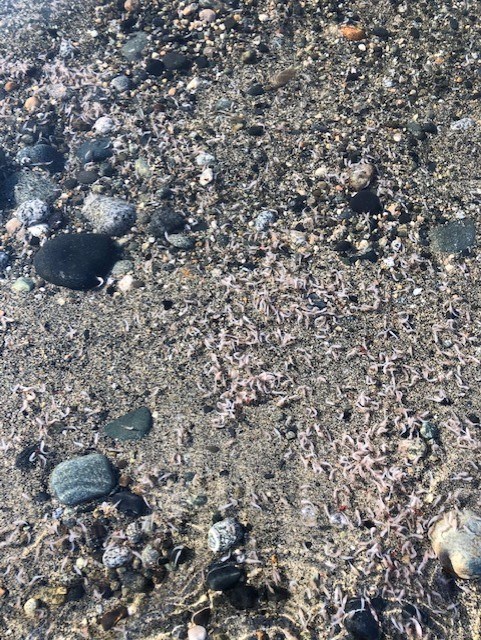Scientists with the Department of Fisheries and Oceans (DFO) suspect depleted oxygen levels caused by large blooms of phytoplankton is the likely cause of a recent die-off of krill in local waters.
People out at beaches in the Selma Park area recently reported seeing thousands of dead krill, which look like small shrimp, washing up on the shore.
Ian Perry of DFO’s Pacific Biological Station in Nanaimo told Coast Reporter via email that krill are common and usually very abundant along the east side of the Strait of Georgia around Sechelt, Malaspina Strait and Jervis Inlet.
“These sorts of large die-offs of krill are not common, but they do occur naturally,” Perry said. “They are usually caused by large blooms of phytoplankton which sink to the bottom and use up much of the oxygen there … causing oxygen stress to animals living at those depths, which is where the krill usually live during the daytime.”
Perry said there was a similar event in the Irvines Landing area in the first week of April last year.
“We had one of our DFO survey vessels in Malaspina Strait a week or so before this incident,” he said. “We observed a large bloom of phytoplankton at that time, which reinforces the theory about this phytoplankton bloom settling to the deep depths and using up the oxygen there.”
There was also a DFO survey ship in the Sechelt area on March 17 and the crew saw evidence of phytoplankton blooms.
“That ship came back to port last Friday [March 20], and we are beginning to analyze the data,” said Perry.
Perry said the oxygen depletion is short-lived, but lasts long enough to harm krill before returning to normal after a few tidal cycles.
“A member of the public has collected some samples for us, which we will examine once we can get them shipped to our labs,” he said.



